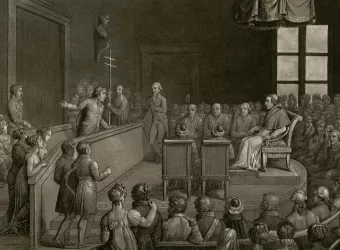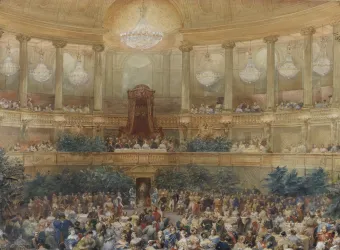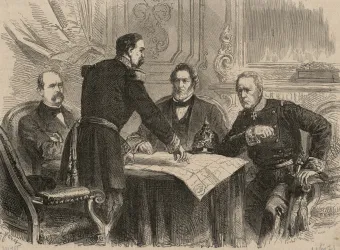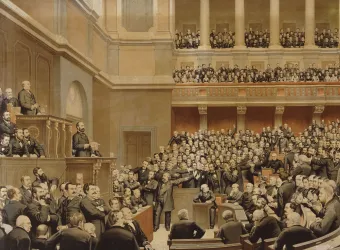In 1837 Louis-Philippe, King of the French, was finally able to inaugurate the historic galleries he had wanted to install in Versailles. The day was a key event in the history of the Palace.

Inauguration of the historic galleries, 1837 10 June 1837
Since the Revolution, the Palace of Versailles had been considered a rather weighty monument. When Louis-Philippe took power in 1830, the Versailles residents hoped it would be given a new purpose. On 1 September 1833 the Citizen King decided to open a history museum in it dedicated to “All the glories of France”. He entrusted the work to the Palace architect, Nepveu, and his own architect, Fontaine. At long last the Palace was to be rendered harmless, ceasing to be a royal residence waiting for a new occupant. Besides its educational role, the museum was also designed to reconcile the French people. At the end of four years of work and 20 millions in expenditure (paid through the Civil list) Louis-Philippe could finally inaugurate his museum.
The opening date was set for 10 June 1837. The king’s eldest son, the Duke of Orléans, had recently married Hélène de Mecklembourg-Schwerin on 30 May, and the inauguration was part of the celebrations. Surrounded by his family and ministers, Louis-Philippe began the opening ceremony in the Gallery of Great Battles. The customary speeches were followed by a tour of the museum. All the most important figures of the arts, science and politics were present, including Victor Hugo, in the uniform of the National Guard, Alexandre Dumas, and Delacroix. The large crowed strolled through the galleries.
Anecdote
Victor Hugo attends the inauguration. He writes : “The century of Louis XIV composed a wonderful book, and the king has given it a magnificent cover.”
The celebration continued with a banquet in the Hall of Mirrors, followed by a performance in the Royal Opera House, newly painted in red and gold, of The Misanthrope by Molière of the Comédie-Française. Despite the presence of the famous Mademoiselle Mars, the show was rather spiritless. Entry had been reserved for a few select personages, mainly men, and this also contributed to the performance’s torpidity. It was followed by a torchlit tour of the museum led by the king, with a special focus on the statue of Joan of Arc made by his daughter Marie. At 11 pm the guests began to return to Paris. A second opening ceremony, this one open to the public, was organised for the following day. These events were the first celebrations to be held in Versailles since the Revolution. The Palace had finally received a new raison d'etre.








